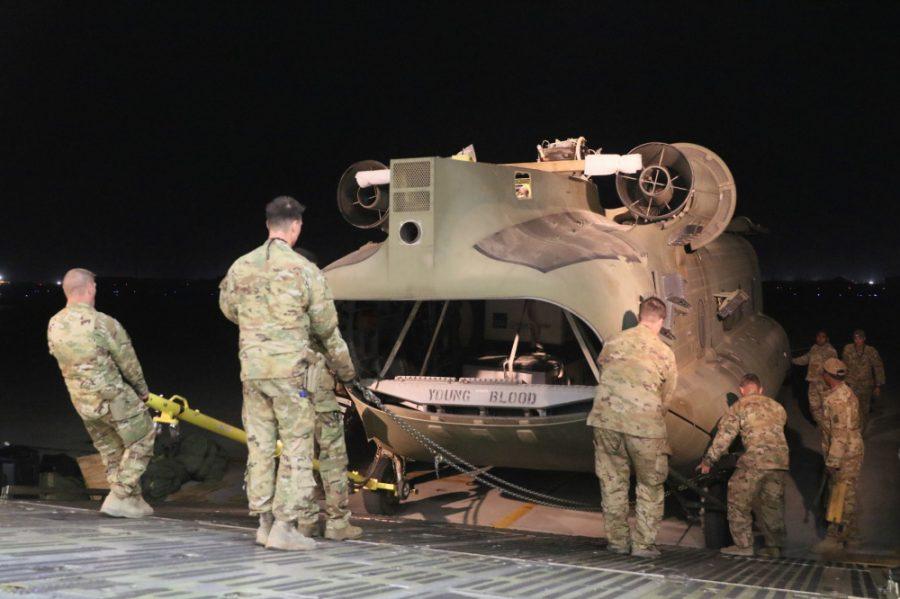
At a press conference on 8 July, US President Joe Biden unequivocally refuted the suggestion that there was any comparison between America’s withdrawal from Afghanistan and its humiliating retreat from Vietnam in 1975. He asserted that the Afghan military was far better equipped and far more capable of withstanding an imminent Taliban takeover of the country than Saigon’s forces were in confronting the North Vietnamese and Viet Cong armies almost half a century ago.
Biden stated that it was ‘highly unlikely’ that ‘there’s going to be the Taliban overrunning everything and owning the whole country’. He declared that the US went into Afghanistan ‘to degrade the terrorist threat to keep Afghanistan from becoming a base from which attacks could be continued against the United States. We achieved those objectives … We did not go to Afghanistan to nation-build.’
To reassure the Afghan government, Biden and his top defense officials, including Defense Secretary Lloyd Austin, have repeatedly said that the US will maintain an ‘over the horizon’ capacity, presumably meaning airpower including drones, in order to help the Afghan government defend itself if the need arose. This looks like a consolation prize for the tottering government in Kabul, which American intelligence, according to reliable reports, believes may collapse in six months after the American withdrawal. While Biden has tried to minimise the import of this assessment, it appears credible in light of the Taliban’s recent military victories that have seen a large number of districts fall into their hands.
According to reliable estimates, the Taliban control more than half of the country’s districts, many of them captured after the beginning of the American withdrawal on 1 May. These include parts of Badakshan province in the northeast bordering on Tajikistan and portions of Herat province in the west bordering on Iran that had not been Taliban strongholds and have large non-Pashtun populations that are averse to Taliban rule. Several of these ethnic groups have organised their own militias in order to bolster the government’s capacity to resist Taliban advances.
However, with Afghan forces melting away before Taliban advances they haven’t been able to stop Taliban control of large swathes of the countryside. The Taliban conquest of a large segment of Herat province and their control over several crossing points into Iran have forced Tehran, which has been firmly opposed to the Taliban coming to power in Kabul, to start negotiations with the Taliban. Iranian Foreign Minister Javad Zarif met with a Taliban delegation that had been invited to Iran in the first week of July to urge the Taliban to come to a negotiated settlement with the Kabul regime to forestall ‘unfavourable’ consequences for Afghanistan.
The Taliban, on their part, having failed so far to seize major urban centres, have adopted the strategy of capturing surrounding areas, thus cutting off government-controlled cities with the aim of eventually forcing them into submission. Close observers of Afghanistan believe the Taliban are following a two-pronged strategy and can shift between the two depending on how the situation develops after America’s total withdrawal. According to Tamim Asey, head of the Institute of War and Peace Studies in Kabul and a former deputy defence minister, ‘In a maximalist sense, the Taliban wants a total military victory … In a minimalist sense, once the Taliban has tested government forces and realized that a total military victory is not within reach then it will use violence as leverage to secure further concessions at the negotiation table.’
With the American withdrawal nearing completion, the Taliban have increased their military pressure, hoping to win an outright victory, though they will probably be willing to settle for a major share in a coalition government as a stepping stone for the re-establishment of the Islamic Emirate of Afghanistan. The latter outcome appears a distinct possibility, especially given the fact that the US didn’t make a political settlement between Kabul and the Taliban a precondition for its withdrawal.
The Trump administration was interested only in bringing American soldiers home without incurring major losses, in the process leaving the Afghan government to its fate. The Biden administration has followed in its predecessor’s footsteps and taken that strategy to its conclusion. This may not be an exact replication of the humiliating defeat in Vietnam, but the final outcome is unlikely to be very different.
The US made the fatal error of turning its anti-terrorist campaign into an anti-insurgency one in 2001–02 and getting embroiled in an unwinnable civil war. History teaches us that prolonged foreign intervention in intra-state conflict exacerbates the conflict by stoking nationalist and religious sentiments. Propping up regimes, especially one as dysfunctional as the Afghan regime, normally leads to severe a backlash, as both the South Vietnam and Afghanistan cases demonstrate.
Washington’s allies and adversaries will see the US’s abandonment of Afghanistan—no matter how much it is camouflaged in optimistic verbiage—as a defeat similar to the one it suffered in Vietnam. The major difference between the two outcomes is that while there was a clear-cut alternative power structure present in Vietnam that could replace the American-backed government, that’s not true of Afghanistan.
The Taliban is clearly the major contender for power in the post-American era, but, given the fractious nature of Afghan society, its control over the whole country will be contested by force of arms by various regional factions, warlords and ethnic groups. This means that Afghanistan could slide into chaos as it did in the early 1990s after the Russian withdrawal, thus once again creating the space for non-state actors, including terrorist groups, to move in.
As if that wouldn’t be bad enough, neighbours—Pakistan, Iran, Russia, China and India – whose interests and objectives are often in conflict with each other, surround Afghanistan. An unstable, indeed failing or failed, state is bound to draw them into the vortex of civil conflict, making the situation in Afghanistan even worse. There’s much more at stake here than merely the credibility of the US and its loss of face.